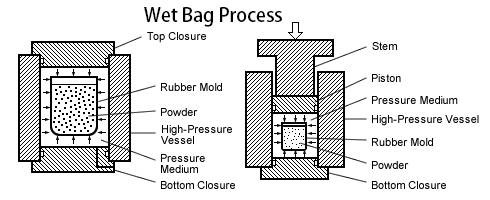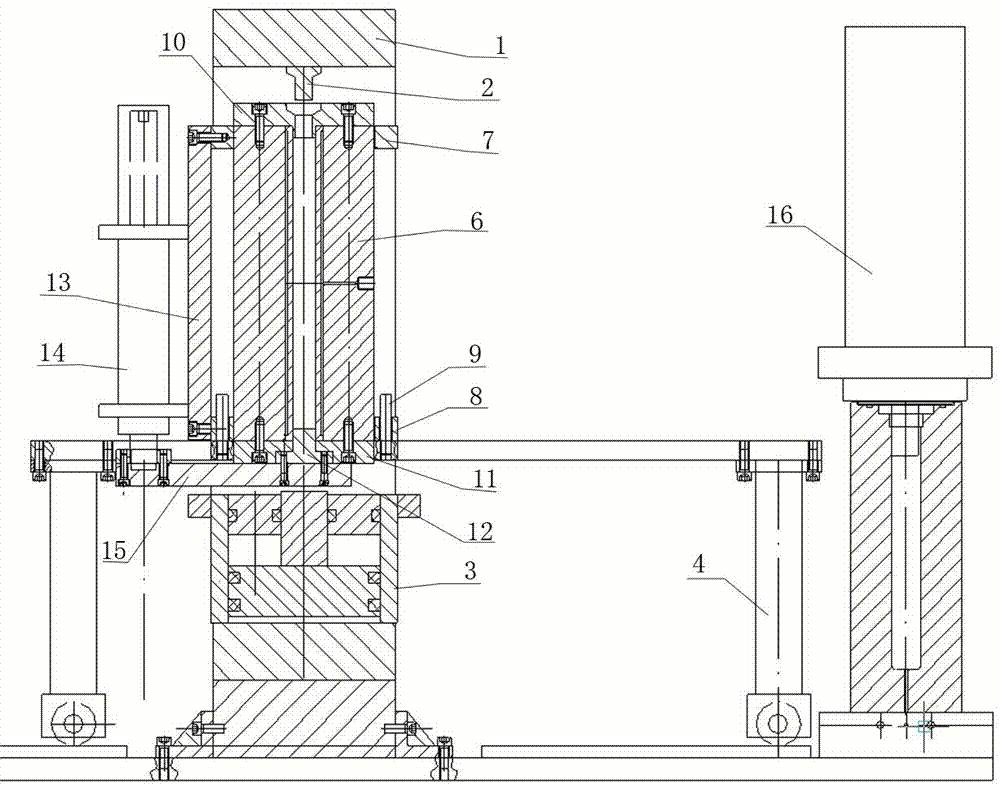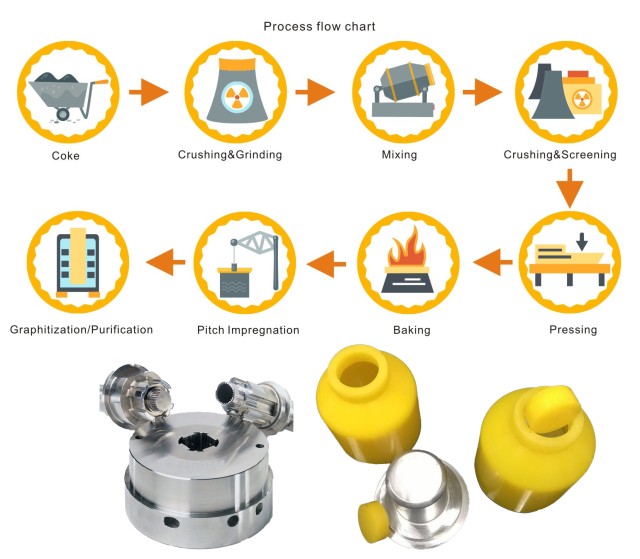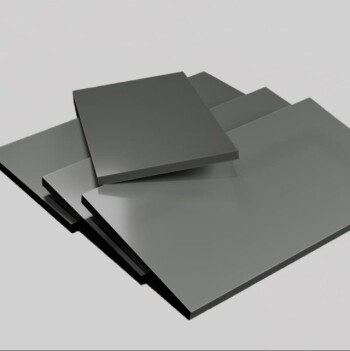Introduction to Isostatic Pressing
Isostatic pressing is a manufacturing process used in the production of high-density, high-strength materials and components. Isostatic pressing involves applying pressure uniformly in all directions to a powdered material, which is contained within a flexible or rigid mold. This technique can be achieved using either wet or dry bag technology, which involves immersing the mold in a liquid or gas medium, respectively. Isostatically pressed products offer several advantages, such as uniform density, high green strength, and excellent surface finish. They are widely used in applications such as aerospace, medical, and automotive industries.
Table of Contents
Types of Isostatic Pressing
Isostatic pressing is a versatile manufacturing process that can be used to create a wide range of high-quality products. There are two types of isostatic pressing: cold isostatic pressing (CIP) and hot isostatic pressing (HIP).
Cold Isostatic Pressing (CIP)
Cold isostatic pressing involves the compaction of powders encased in elastomeric molds. In this process, the mold is placed into a pressure chamber and filled with a room-temperature liquid before the press applies the pressure from all sides, condensing the metal powder. As a result, the powder particles mechanically bond to each other, creating a solid green body. There are two types of presses used for cold dry bag isostatic pressing — monostatic isostatic presses with single-cavity structures and densomatic isostatic presses with multi-cavity designs. Cold isostatic pressing is used for products that require a high degree of precision, such as ceramic parts and metal powders. Because the pressure is applied at room temperature, the process is relatively quick and inexpensive. However, the resulting products may not have the same degree of strength and toughness as those produced through hot isostatic pressing.
Hot Isostatic Pressing (HIP)
Hot isostatic pressing involves the compaction of powder material at high temperature and pressure using a sealed metal container. The high temperature and pressure cause the powder particles to fuse together, resulting in a product with a uniform microstructure and excellent mechanical properties. Hot isostatic pressing is used to create products that require a high degree of strength and toughness, such as aircraft engine components and nuclear fuel rods. The process is more expensive and time-consuming than cold isostatic pressing but produces products with superior quality. Hot isostatic pressing (HIP) involves both temperature and pressure applied simultaneously to obtain fully dense parts (to 100% theoretical density), and is used mainly for engineered ceramics requiring optimum properties for high-performance applications.
In conclusion, isostatic pressing is a versatile manufacturing process that can be used to create a wide range of high-quality products. The type of isostatic pressing used depends on the properties required for the product. Cold isostatic pressing is used for products that require precision, while hot isostatic pressing is used for products that require strength and toughness.
Wet Bag Technology
Isostatic pressing is a manufacturing process that produces high-quality ceramic products with uniform density and strength. One of the techniques used in isostatic pressing is known as the wet bag technology.

Filling the Bag with Ceramic Powder
The wet bag technology involves filling a flexible bag with ceramic powder. The bag is then immersed in a liquid medium, which could be water or oil.
Applying High Pressure
The bag is then subjected to high pressure, up to 200 MPa, which compresses the powder evenly from all directions, resulting in a uniform density and reduced porosity.
Distributing Pressure Evenly
The liquid medium also helps to distribute the pressure evenly and prevent the formation of cracks or defects in the final product.
Removing the Bag and Drying the Powder
After the pressing, the bag is carefully removed, and the compressed powder is dried and sintered to achieve the desired properties.
Use in Various Industries
Wet bag technology is particularly useful for producing complex shapes and large-sized components that require high accuracy and reliability. It is commonly used in the aerospace, automotive, and medical industries, where precision and durability are critical.
Wide Range of Materials
The process also allows for the use of a wide range of ceramic materials, such as alumina, zirconia, and silicon nitride, each with its unique properties and applications.

Specialized Equipment and Expertise
Although the wet bag technology requires specialized equipment and expertise, it offers significant advantages over other manufacturing processes, such as injection molding or dry pressing, in terms of quality, cost-effectiveness, and scalability.
Dry Bag Technology
Dry bag technology is a form of isostatic pressing that is used to produce high-quality, uniform products. The process involves using a flexible bag filled with powder to create the desired shape. Here is a step-by-step process of how Dry Bag Technology works:

Step 1: Filling the Bag with Powder
The first step in the Dry Bag Technology process is filling the flexible bag with the powder needed to create the desired shape. The powder is carefully measured to ensure that the final product is of the highest quality.
Step 2: Placing the Bag in a Chamber
Once the bag is filled with powder, it is placed in a chamber. The chamber is then pressurized with either water or gas.
Step 3: Applying Pressure
As the pressure in the chamber increases, the powder particles inside the bag are forced to conform to the shape of the bag. The bag expands to accommodate the pressure and shape of the powder.
Step 4: Achieving the Desired Density and Shape
The pressure is maintained until the desired density and shape are achieved. The final product is a bag filled with powder that has conformed to the desired shape.
Step 5: Removing the Bag and Sintering the Product
The bag is then removed from the chamber and the product is sintered. Sintering is a process that fuses the powder particles together to create a solid product. This process minimizes porosity and results in excellent mechanical properties.
Dry Bag Technology is commonly used in the production of ceramic and metal components for aerospace, medical, and industrial applications. The process has several advantages over traditional manufacturing methods, including the ability to produce complex shapes and consistent quality. Additionally, the process is more environmentally friendly than other forms of isostatic pressing, as it does not require the use of oils or lubricants.
In conclusion, Dry Bag Technology is an efficient and versatile way to produce high-quality, isostatically pressed products. The process involves filling a flexible bag with powder, placing it in a chamber, applying pressure to conform the powder to the shape of the bag, achieving the desired density and shape, and sintering the product. The final product is a high-quality, uniform product with minimal porosity and excellent mechanical properties.
Advantages of Cold Isostatic Pressing
Cold isostatic pressing (CIP) is a manufacturing process that involves compacting powders into a highly dense and uniform solid through the application of high pressure. This process offers several advantages, making it an ideal choice for the production of a wide range of materials. In this section, we will explore some of the major advantages of cold isostatic pressing.
Green Strength
One of the primary advantages of cold isostatic pressing is its ability to produce materials with high green strength. Green strength refers to the ability of a molded material to withstand manipulation before it is completely hardened. Materials produced via cold isostatic pressing have high green strength, which means that such materials have a higher turnover as they can be sintered or machined faster than other materials.

Uniform Density
Cold isostatic pressing ensures that materials have a uniform density. This means that there will be uniform shrinkage when the material is going through other processes such as sintering. The uniform density can be attributed to the fact that the pressure used in CIP reaches every part of the material with equal magnitude.
Uniform Strength
Since the pressure used to compact the materials is equal in all directions, the material has uniform strength. Materials with uniform strength are usually more efficient than those without uniform strength.
Versatility
CIP can be used to produce difficult shapes that cannot be produced by other methods. In addition, it can be used to produce large-sized materials. The only limitation to the size of materials produced by this method is the size of the pressure vessel.
Corrosion Resistance
Cold isostatic pressing improves the corrosion resistance of a material. Thus materials that undergo this process have a longer lifespan than most other materials.
Mechanical Properties
The mechanical properties of cold isostatic pressed materials are improved. Some of the properties improved include ductility and strength.
Conclusion
Isostatic pressing is a versatile technology that is widely used in the manufacturing of high-performance materials and components. It offers numerous advantages over traditional pressing methods, such as green strength and uniform density. The wet bag and dry bag technologies are the two most common types of isostatic pressing used today. The technology is applicable in a wide range of industries, including aerospace, automotive, medical, and nuclear. With the ability to produce complex shapes and high-quality parts, isostatic pressing is a reliable and cost-effective way to manufacture products that meet the most stringent quality standards.
Related Products
- Electric Lab Cold Isostatic Press CIP Machine for Cold Isostatic Pressing
- Cold Isostatic Pressing Machine CIP for Small Workpiece Production 400Mpa
- Manual Cold Isostatic Pressing Machine CIP Pellet Press
- Warm Isostatic Press for Solid State Battery Research
- Warm Isostatic Press WIP Workstation 300Mpa for High Pressure Applications
Related Articles
- Isostatic Pressing Technology: Revolutionizing Ceramic Material Densification
- Electric Lab Cold Isostatic Press (CIP): Applications, Benefits, and Customization
- Understanding Cold Isostatic Pressing Method for Powdered Materials
- Understanding Cold Isostatic Pressing and its Types
- Additive Manufacturing for Isostatic Pressing: Bridging New Technology with Traditional Manufacturing















